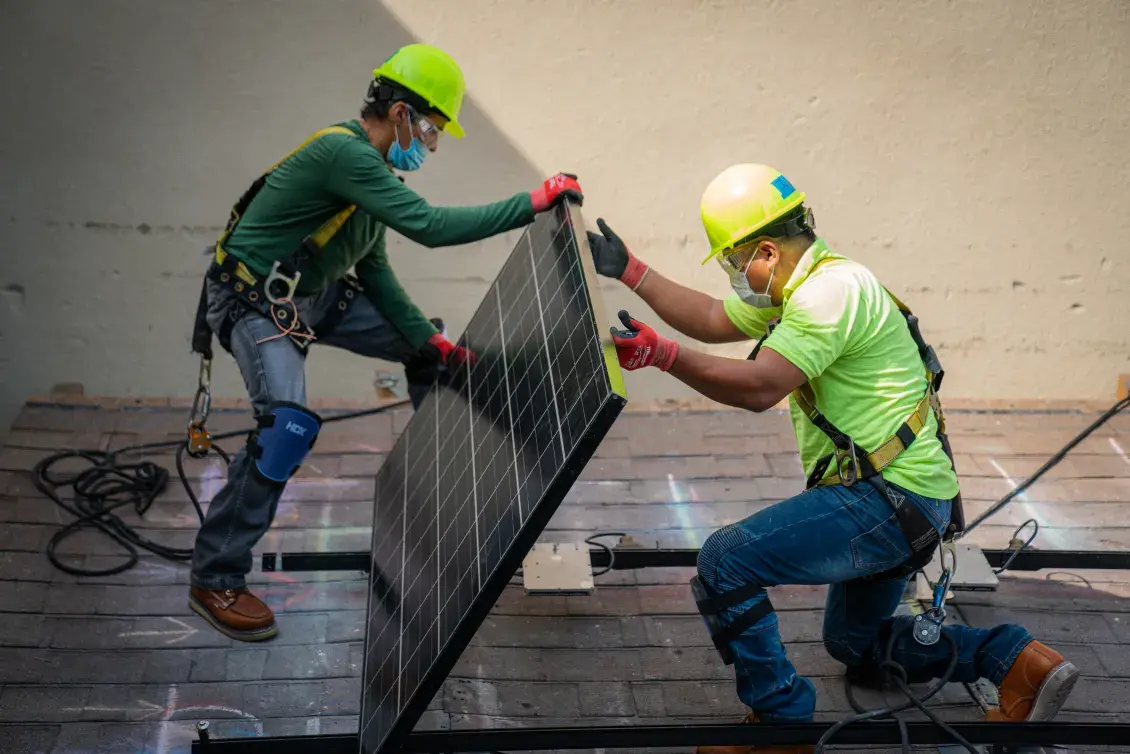The demand for community development capital is as great as it has ever been, as economic conditions create critical financing gaps that cannot be met by the conventional marketplace.
So, where is that additional capital going to come from? Will investors interested in measurable, sustainable impact continue to see opportunity in community development financial institutions (CDFIs)? And what data should CDFIs be providing to demonstrate their capacity to deliver on both financial return and impact?
The answers to those questions are critical. Impact investors have helped CDFIs significantly scale their activity over the last five years, particularly during the pandemic, focusing on the needs of hard-hit communities and the deep racial inequities that permeate so much of our culture and economic life. Our organizations recently teamed up to analyze the landscape for CDFI investments to date, both documenting market activity and providing a clear menu of potential opportunities for investors. The goal is to help impact investors identify how and where they might put their capital to work and what expectations they should have for performance.
The result is CDFIs and the Capital Markets: Trends in Investment & Impact Measurement. It details how the CDFI sector has reflected the broader market reality: the demand for investment opportunities that align capital with purpose has rapidly grown, topping the $1.16 trillion mark in 2021, as retail, corporate and institutional investors all gravitated toward sustainable social impact.
More specifically, though, we look at how CDFIs have responded to that growing demand with new investment vehicles that span the risk-return spectrum—offering investors the chance to address the acute affordable housing crisis; persistent racial health, wealth, and opportunity gaps; and disproportionate environmental impacts in low-income and historically underserved communities.
CDFIs are primed to grow their portfolios in all of these areas. But ambitious plans are now colliding with rising interest rates and increased tightening of credit throughout the financial system. Do we slow our activity in response, despite increased community needs? Or, do we attempt to raise capital at rates that work for the economics of the affordable housing, small business, commercial and community projects that CDFIs finance in disadvantaged communities?
For most CDFIs, it will be the latter. Given the performance of CDFI debt—not to mention the overall track record of the field—the sector remains a strong option for investors eager to achieve real impact. Some highlights from our report (with data through December 2022) include:
- Unrated note programs (those without a credit rating from a nationally recognized statistical rating organization) have been a staple of many CDFIs’ capital strategies for years, with 19 unrated note programs in the market totaling $311 million. Recognition of these programs has increased, reducing information asymmetry and providing investors with more transparency into the options that exist to align their investments with their values across different price points, terms, and impact themes.
- Rated note issuance has increased to $529 million, giving retail investors greater access. Rated notes are available for purchase through a broker-dealer, with no need for investors to provide applications or other onboarding materials directly to the CDFI issuer. There has also been some deepening in the way these notes are positioned and used, such as the overlay of common impact frameworks, including the International Capital Market Association’s (ICMA) Social Bond Principles, ICMA Sustainability Bond Guidelines and UN Sustainable Development Goals. Rated CDFI note securities are now held by the largest spectrum of investors, ranging from retail investors holding individual notes in their portfolios to institutional investors purchasing notes for placement in bond funds and exchange-traded funds.
- In comparison to note program debt, the $837 million in CDFI bond debt is held largely by institutional investors. The most recent bond issuances have aligned with the ICMA’s Sustainability Bond Guidelines and obtained a second party opinion, in what is becoming best practice for the industry. This alignment helps translate a CDFI’s work and impact into terms employed by investors in the broader debt markets.
These capital market successes have helped pave the way for new CDFI tools and strategies, such as Century Housing Corporation’s launch of a commercial paper program late last year – a first for a CDFI. And just last week Momentus Capital announced the launch of a social purpose investment bank that plans to assist CDFIs gain greater access to the capital markets through collateralized debt offerings. We expect to see additional innovations emerge as the demand for impact investments continues to increase.
These efforts are all geared toward getting capital and liquidity to a larger segment of the CDFI industry. That financing is an essential resource for building social, economic, and environmental outcomes that support equity and opportunity in our communities, while also promoting sustainable economic growth.
Elise Balboni is president of Enterprise Community Loan Fund. Kathleen Keefe is investor relations and portfolio reporting lead for LISC. Anna Smukowski is senior director of capital programs at Enterprise Community Loan Fund. They authored the new white paper, CDFIs and the Capital Markets: Trends in Investment & Impact Measurement, which is part of a series of papers on CDFIs as vehicles for impact investment, including CDFIs & Impact Investing: An Industry Review (December 2017) and CDFIs & the Capital Markets: Tapping into Impact Investors (June 2020).


